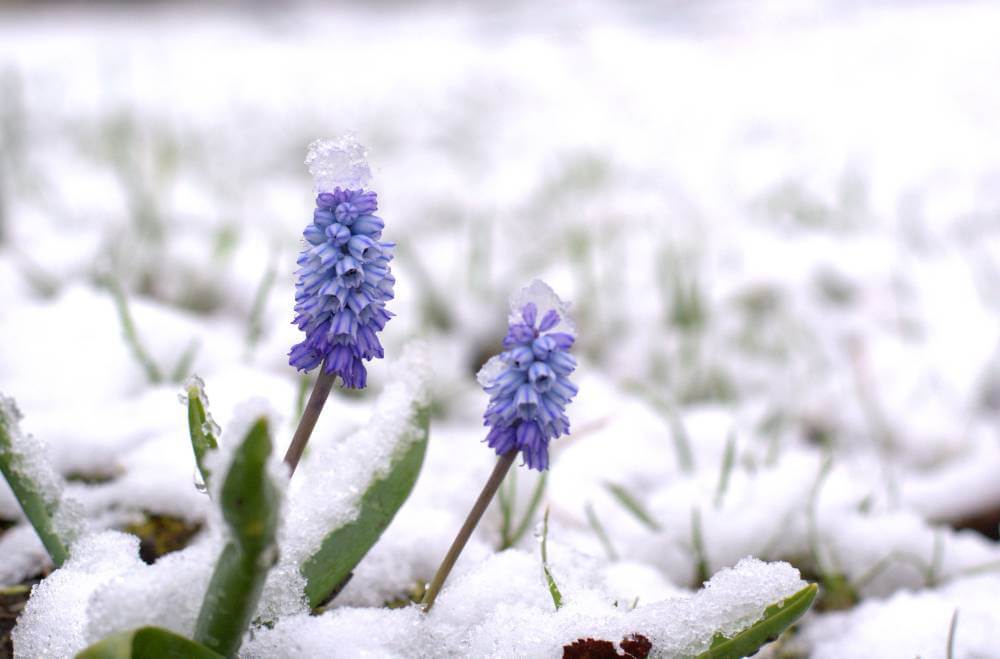Welcome, herb enthusiasts, to a delightful journey into the world of mint cultivation! In this comprehensive guide, I’ll be sharing expert advice and techniques to help you grow mint like a seasoned gardener. From selecting the perfect varieties to mastering the art of propagation, get ready to embark on a minty adventure that will elevate your garden and culinary creations to new heights.
Benefits and Typical Uses: Mint’s Versatile Charm
. Mint’s refreshing flavor and aroma make it a popular choice for culinary delights, from refreshing beverages like mint tea and mojitos to savory dishes such as salads, sauces, and desserts. Beyond its culinary uses, mint boasts a range of health benefits, including aiding digestion, freshening breath, and soothing sore throats. With its myriad uses, mint is truly a must-have herb in any garden or kitchen.
Exploring Mint’s Varieties
Mint comes in a variety of flavors and forms, each offering its own unique characteristics and culinary possibilities. From the classic spearmint with its refreshing, slightly sweet flavor to the bold, peppery notes of peppermint, there’s a mint variety to suit every palate and culinary adventure. Explore the nuances of chocolate mint, pineapple mint, and apple mint, each adding a delightful twist to your favorite recipes. Whether you’re crafting cocktails, infusing oils, or garnishing desserts, the diverse array of mint varieties offers endless opportunities for culinary creativity.
Annual or Perennial: Mint’s Enduring Legacy
One of the great benefits of growing mint is its status as a perennial herb, meaning it returns year after year with minimal effort. Once established, mint plants will continue to thrive and spread, providing a continuous harvest of fresh leaves for years to come. However, it’s essential to note that mint can be quite vigorous and invasive, spreading rapidly through underground rhizomes. To contain its growth, consider planting mint in containers or confined garden beds to prevent it from taking over your garden.
Preferred Planting Season: Timing Is Key
When it comes to planting mint, timing is crucial for success. Mint prefers to be planted in the spring or fall when temperatures are mild and soil moisture is consistent. Prepare the soil by amending it with compost or aged manure to improve fertility and drainage, ensuring optimal growing conditions for your mint plants. With the right timing and preparation, you’ll set the stage for a bountiful harvest of fresh mint leaves.
Sunlight Lover or Shade Tolerant: Mint’s Light Preferences
Mint is adaptable when it comes to light preferences, thriving in a variety of conditions ranging from full sun to partial shade. While mint prefers full sun for optimal growth and flavor development, it can also tolerate partial shade, especially in hot climates. In areas with intense afternoon sun, providing some afternoon shade can help prevent wilting and sunburn. Experiment with different light conditions to find the perfect balance for your mint plants, ensuring they receive enough sunlight to thrive without becoming stressed.
Tips for Winter Care: Nurturing Mint Through the Chill
Winter care is essential for maintaining healthy mint plants year-round. In colder climates, mint may go dormant during the winter months, but with proper protection, it can survive and regrow in the spring. Mulch around the base of mint plants to insulate the roots and protect them from freezing temperatures. Consider covering plants with frost cloth or row covers during particularly cold snaps to provide additional protection. Indoors, maintain consistent watering and ensure mint plants receive adequate sunlight or supplemental grow lights to prevent leggy growth.
Grow from Seeds vs. Seedlings: Choosing Your Starting Point
When it comes to growing mint, you have the option of starting from seeds or seedlings, each with its own advantages and considerations. Growing mint from seeds offers the satisfaction of nurturing plants from their earliest stages and allows for a wider selection of mint varieties. However, mint seeds can be slow to germinate and may require additional time and patience to establish. Alternatively, starting with seedlings provides a head start on the growing season and reduces the risk of potential setbacks. Whichever method you choose, ensure that the soil is well-draining and amend with compost for optimal growth.
Growing from Cuttings: Propagating Mint with Ease
Another popular method of propagating mint is by taking cuttings from established plants and rooting them to create new plants. To propagate mint from cuttings, select healthy stems with several sets of leaves and trim them just below a leaf node. Remove any lower leaves to expose the nodes where roots will emerge. Place the cuttings in a container filled with water, ensuring that the nodes are submerged while the leaves remain above the waterline. Change the water regularly to prevent stagnation and monitor the cuttings for root development. Once roots have formed, transplant the cuttings into a well-draining potting mix and continue to care for them as you would seed-grown mint. With a little patience and nurturing, you’ll soon have a thriving mint garden filled with aromatic foliage.
Grow Indoor or Outdoor: Exploring Cultivation Options
When it comes to growing mint, you have the flexibility to choose between indoor or outdoor cultivation based on your preferences and available space. Indoor growing is perfect for those with limited outdoor space or harsh weather conditions. With the right care, mint thrives indoors, providing a fresh supply of leaves year-round. Outdoor cultivation, on the other hand, allows mint to spread freely and bask in natural sunlight. Consider your climate, space, and convenience when deciding between indoor or outdoor growing.
Best Soil for Growing Mint: Setting the Foundation
Selecting the right soil is crucial for successful mint cultivation. Mint thrives in well-draining, slightly acidic soil. Choose a loamy soil rich in organic matter, such as compost or well-rotted manure, to provide essential nutrients and promote healthy root growth. Avoid heavy clay soils that retain water, as they can lead to root rot and other issues. Before planting mint, amend the soil with organic matter to improve its texture and fertility, creating the perfect growing environment for this aromatic herb.
Growing Mint in a Pot
Growing mint in pots is an excellent option for those with limited space or who want to control its spread. Choose a large pot with ample drainage holes to prevent waterlogging, as mint’s vigorous growth requires plenty of space for its roots. Fill the pot with well-draining potting mix, leaving a few inches of space at the top to accommodate watering. Plant mint seedlings or cuttings in the center of the pot, pressing the soil gently around the roots. Place the pot in a sunny location for optimal growth, and water regularly to keep the soil evenly moist. With proper care, your potted mint will thrive and provide a fresh supply of leaves.
Hydroponic Cultivation of Mint
For those seeking innovative growing methods, hydroponic cultivation offers an exciting alternative to traditional soil gardening. Growing mint hydroponically involves suspending the plant’s roots in a nutrient-rich water solution, allowing for faster growth rates and higher yields. To get started, select healthy mint cuttings and place them in a container filled with aerated water enriched with hydroponic nutrients. Monitor the water’s pH levels and nutrient concentrations regularly to ensure optimal growing conditions. With proper care and attention, hydroponic mint cultivation can yield impressive results.
Watering Instructions: Quenching Mint’s Thirst
Proper watering is essential for mint’s growth and vitality. Mint prefers consistently moist soil but can suffer from root rot if overwatered. Water mint plants deeply but infrequently, allowing the top inch of soil to dry out between waterings. Pay attention to environmental factors such as temperature and humidity, as these can affect the plant’s water needs. During hot weather or periods of drought, increase watering frequency to keep the soil evenly moist. Aim to water the soil directly rather than wetting the foliage, as this can help prevent fungal diseases.
Companion Planting: Maximizing Garden Harmony
Mint serves as a valuable companion plant in the garden, offering both culinary benefits and pest-repelling properties. Planting mint alongside compatible herbs, flowers, and vegetables can help enhance growth and flavor while deterring pests and attracting beneficial insects. Compatible companions for mint include basil, rosemary, and lavender, which complement its growth habits and flavor profile. Additionally, mint’s strong scent helps repel pests such as aphids, ants, and rodents, making it a valuable ally in the garden ecosystem.
Planting Foes: Beware of Incompatible Companions
While mint thrives alongside many garden companions, there are a few plants it’s best to keep at a distance. Mint can be invasive and spread rapidly, so it’s important to avoid planting it near other herbs or vegetables that may be overshadowed or crowded out. Additionally, mint’s aggressive growth can inhibit the growth of neighboring plants, especially those with shallow root systems. To prevent conflicts in the garden, keep mint contained in pots or plant it in designated areas away from other garden plants.
Attraction for Pollinators: A Garden Buzz
Mint’s aromatic flowers are a magnet for pollinators, attracting bees, butterflies, and other beneficial insects to the garden. As mint blooms, its flowers provide a vital food source for pollinators, supporting biodiversity and ecosystem health. By allowing mint plants to flower, you’ll not only enjoy a continuous harvest of fresh leaves but also contribute to the wellbeing of local pollinator populations. Embrace mint’s floral allure and watch as your garden becomes a buzzing haven for beneficial insects.
Pruning Instructions: Shaping Mint for Success
Regular pruning is essential for keeping mint plants healthy and productive. Pinch off the topmost leaves of mint stems to encourage bushier growth and prevent the plant from becoming leggy. Additionally, remove any yellowing or diseased foliage promptly to maintain overall plant health. Pruning also helps control the spread of mint, as it tends to grow vigorously and can become invasive if left unchecked. By pruning mint regularly, you’ll promote robust growth and ensure a continuous supply of fresh leaves for culinary use.
Pest Treatment: Keeping Mint Healthy and Pest-Free
While mint is relatively pest-resistant, it can fall victim to common garden pests such as aphids, spider mites, and whiteflies. Keep an eye out for signs of pest infestation, such as curled or discolored leaves, and take prompt action to address the issue. Spray affected plants with a gentle insecticidal soap solution or neem oil to control pests naturally. Alternatively, introduce beneficial insects such as ladybugs or lacewings to help keep pest populations in check. Regular monitoring and proactive pest management are key to keeping mint plants healthy and pest-free.
Conclusion: Embracing the Magic of Mint
And there you have it, herb enthusiasts – the ultimate guide to growing mint like a pro! Armed with expert advice and techniques, you’re ready to embark on your own mint-growing adventure, cultivating fresh foliage and vibrant flavors with ease. Whether you’re sowing seeds, nurturing seedlings, or propagating cuttings, may your mint garden flourish and delight your senses with its aromatic abundance.
Stay tuned for more gardening wisdom and herbaceous delights in future blog posts!







